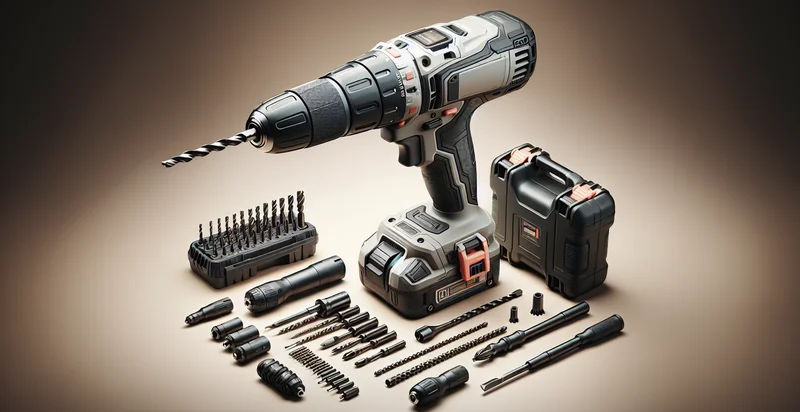Identify impact vs regular drill
using AI
Below is a free classifier to identify impact vs regular drill. Just upload your image, and our AI will predict if it's an impact drill or a regular drill - in just seconds.

Contact us for API access
Or, use Nyckel to build highly-accurate custom classifiers in just minutes. No PhD required.
Get started
import nyckel
credentials = nyckel.Credentials("YOUR_CLIENT_ID", "YOUR_CLIENT_SECRET")
nyckel.invoke("impact-vs-regular-drill", "your_image_url", credentials)
fetch('https://www.nyckel.com/v1/functions/impact-vs-regular-drill/invoke', {
method: 'POST',
headers: {
'Authorization': 'Bearer ' + 'YOUR_BEARER_TOKEN',
'Content-Type': 'application/json',
},
body: JSON.stringify(
{"data": "your_image_url"}
)
})
.then(response => response.json())
.then(data => console.log(data));
curl -X POST \
-H "Content-Type: application/json" \
-H "Authorization: Bearer YOUR_BEARER_TOKEN" \
-d '{"data": "your_image_url"}' \
https://www.nyckel.com/v1/functions/impact-vs-regular-drill/invoke
How this classifier works
To start, upload your image. Our AI tool will then predict if it's an impact drill or a regular drill.
This pretrained image model uses a Nyckel-created dataset and has 2 labels, including Impact Drill and Regular Drill.
We'll also show a confidence score (the higher the number, the more confident the AI model is around if it's an impact drill or a regular drill).
Whether you're just curious or building impact vs regular drill detection into your application, we hope our classifier proves helpful.
Related Classifiers
Need to identify impact vs regular drill at scale?
Get API or Zapier access to this classifier for free. It's perfect for:
- Quality Control in Manufacturing: In production facilities, an automated system can use the 'impact vs regular drill' identifier to ensure that only the correct drilling tools are used during assembly. This helps maintain product quality and reduces the risk of defects that could arise from using inappropriate tools.
- Inventory Management: Retailers can utilize the classification function to manage inventory more effectively by distinguishing between impact and regular drills. This enables better stock tracking and ensures that consumers can easily find the tools they need, improving customer satisfaction.
- E-commerce Product Categorization: Online marketplaces can apply this classification to automatically categorize products based on their type, enhancing the shopping experience. This allows for more accurate search results and helps customers find the right drills without confusion.
- Tools Rental Services: Rental businesses can leverage the identifier to streamline their inventory systems, ensuring that customers are provided with the correct tool type. This reduces operational errors and increases customer trust in the rental process.
- Maintenance and Repair Services: Service centers can utilize the classification function to identify the appropriate drills needed for repair tasks, ensuring that technicians have the right tools at their disposal. This improves efficiency and reduces the time taken to complete service jobs.
- Training and Education Programs: Educational institutions can incorporate this technology in their training programs for aspiring electricians and contractors, teaching them the practical differences between impact and regular drills. This enhances hands-on learning and prepares students better for their careers.
- Safety Compliance Assessments: Safety auditors can use the identifier to verify that proper tools are being used in construction and maintenance environments, ensuring compliance with safety standards. This reduces the likelihood of accidents related to tool misuse in professional settings.


